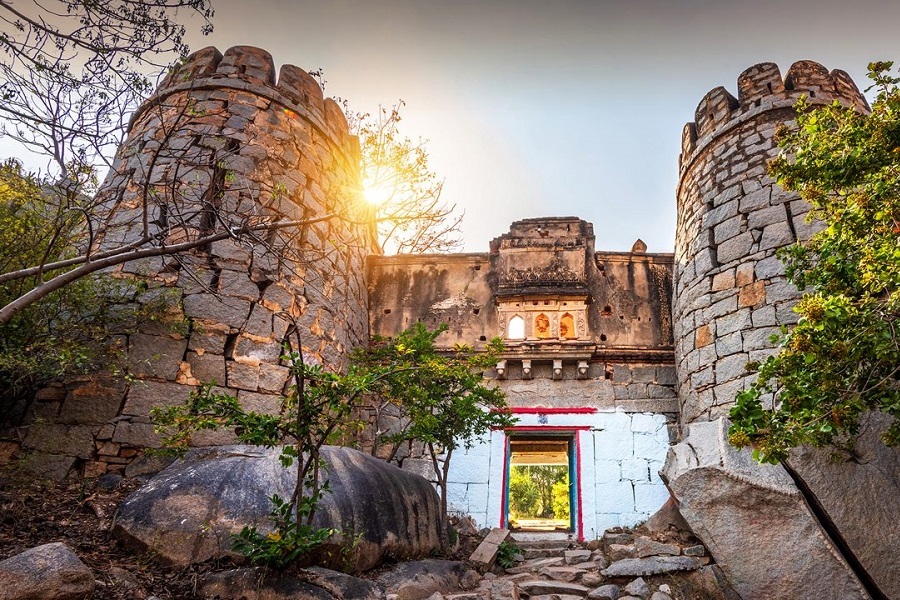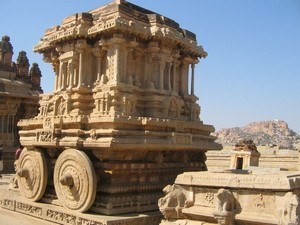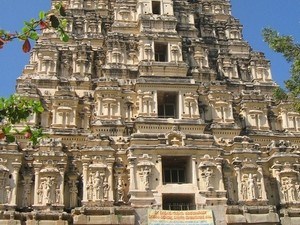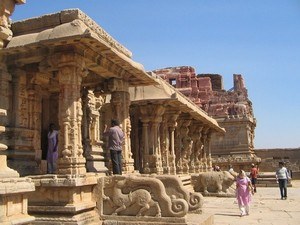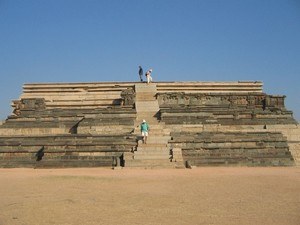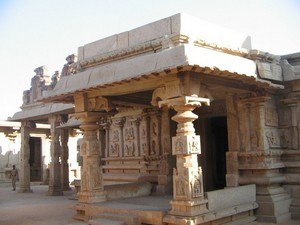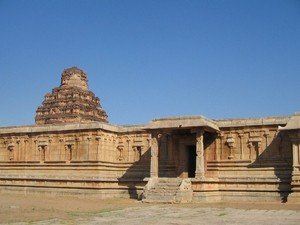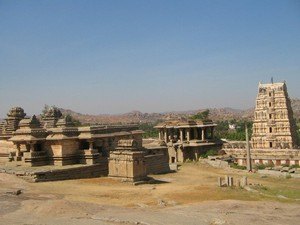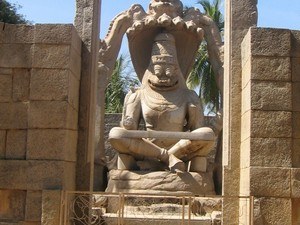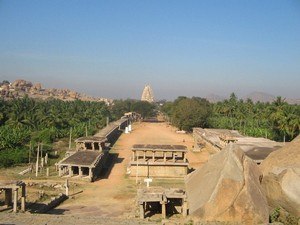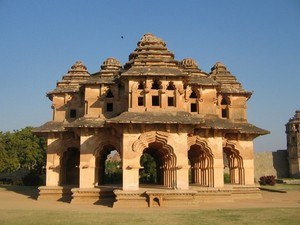Anegundi, Hampi - Timings, History, Architecture, Best Time to Visit
 #14 of 37 Places to Visit in Hampi
#14 of 37 Places to Visit in Hampi
 Distance (From Hampi): 19 Kms
Distance (From Hampi): 19 Kms
 Trip Duration (Including Travel): 2-3 Hours
Trip Duration (Including Travel): 2-3 Hours
 Transportation Options: Bus / Cab
Transportation Options: Bus / Cab
 Travel Tips: None
Travel Tips: None
At a distance of 19 Km from Hampi, Anegundi, previously called Kishkindha, is a village in the Koppal district of Karnataka. Situated on the northern bank of the Tungabhadra River, it is one of the heritage places to visit as part of the Hampi packages.
Anegundi was the capital of the Vijayanagara kings prior to the establishment of the renowned capital Hampi. The village is also notable for its association with the Ramayana, as it is thought to be the monkey kingdom of Kishkindha, ruled by the prince Sugriva. According to geologists, the Anegundi region is believed to possess one of the oldest plateaus on Earth, estimated to be over four billion years old. Prehistoric rock shelters and paintings can be found in the Tungabhadra River valley.
Anegundi village is home to numerous ancient temples and structures. Among the most significant are the Ranganathaswamy temple, Chintamani temple, Hachappa Mantapa, Anjaneya Temple, Ganesh temple, Anegundi Fort, and Gagan Mahal. The Chintamani temple is situated on the riverbank in Anegundi. Legend has it that this is the precise location where Ram presented Hanuman with a valuable jewel, Chintamani, to help Sita recognize him as Ram's messenger. Close to the cave, there are impressions of footprints belonging to Lakshman and Ram on the rock. It is believed that from this very location, Ram aimed and shot the arrow that killed Bali.
Gagan Mahal was constructed in the 16th century for the royal women to observe the celebrations in the village square. The bejeweled windows of this yellow palace overlook the ancient Ranganathaswamy Temple and the village square. The old palace exhibits a striking influence of Islamic architecture and is surrounded by a fort, which is now in ruins. The preserved section of the palace currently serves as office premises, while the remaining parts are entirely dilapidated. Today, the palace stands as a mere shadow of the original splendor and allure it likely possessed during its prime.
The Anegundi Fort exemplifies Indo-Islamic architecure. Within its confines, the Durga Temple and Ganesha Cave Temple are said to resonate with the echoes of a past era. It is thought that prior to engaging in battles, the rulers of Vijayanagara sought divine blessings from the deities housed within the fort. Another significant site in Anegundi is the Pampa Sarovara, which translates to 'lotus pond' in Sanskrit. As per Hindu mythology, it is recognized as one of the five sacred lakes (sarovars) in India and is believed to be the location where Shabari encountered Lord Rama. The small Shabari cave, situated near the lake, is cared for by tribal families residing nearby. The footprints of Lord Ram can still be observed at the spot where Shabari cleansed his feet with water from the sarovar. Temples dedicated to Goddess Vijayalakshmi, Lord Shiva, and Pampa Devi can also be found in the area.
Adjacent to Anegundi and located across the Tungabhadra River from Hampi, the Anjanadri Hills are regarded as the birthplace of the Hindu deity Lord Hanuman. Born to Anjana, Lord Hanuman is also referred to as Anjaneya, which is the origin of the name Anjanadri Hills, linked to his birth.
Timings: 6 AM - 6 PM
Entry: Free



